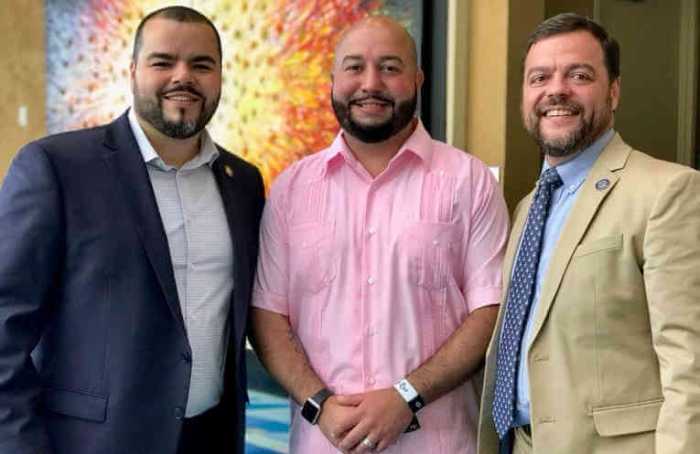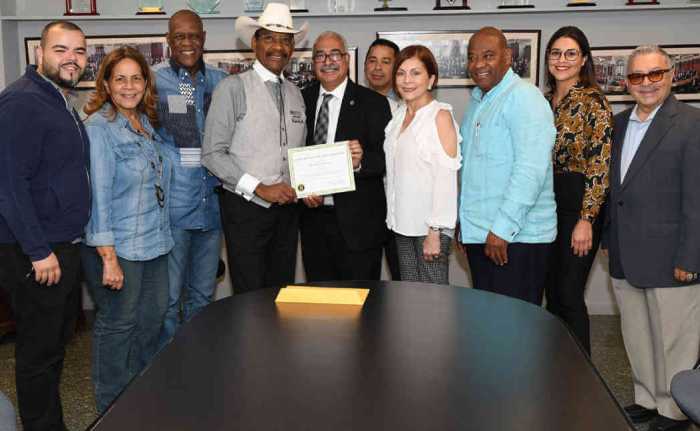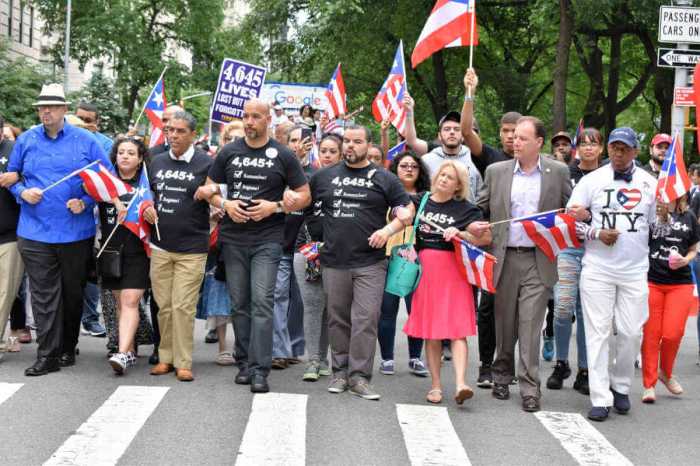The Bronx has become a second home to many of NYC’s first, second and third-generation Carribeans as the nation’s largest population of Dominican and Puerto Ricans.
But the mood on Tuesday night in the South Bronx’s Puerto Rican and Dominican enclaves was somber, mournful and that sinking feeling of déjà vu, as they watched images and videos of a major hurricane once again ransacking the Caribbean.
Hurricane Fiona struck Puerto Rico’s southwest coast on Sunday and dumped “historic” rainfalls of up to 30 inches in eastern and southern Puerto Rico, where hurricanes and tropical storms continue to plague the island’s inhabitants.
South Bronx natives Edgar Rosario and Wilma Ortiz, who both immigrated from Puerto Rico, have had their minds on their native homeland where the intensity of Hurricane Fiona — a Category 3 storm that interrupted power for the vast majority of the island’s 3.1 million residents — also left 1 million without running water in the Dominican Republic and continued to rage through Turks and Caicos on Tuesday reaching wind gusts as high as 11 mph and leaving “life-threatening flooding” through the afternoon.
In Puerto Rico, an unincorporated U.S. territory, the reconstruction from Hurricane Maria — the deadly Category 5 hurricane that killed 2,975 in the country five years ago Saturday — had been an ongoing effort, where more than 3,000 homes on the island are still covered by blue tarps.
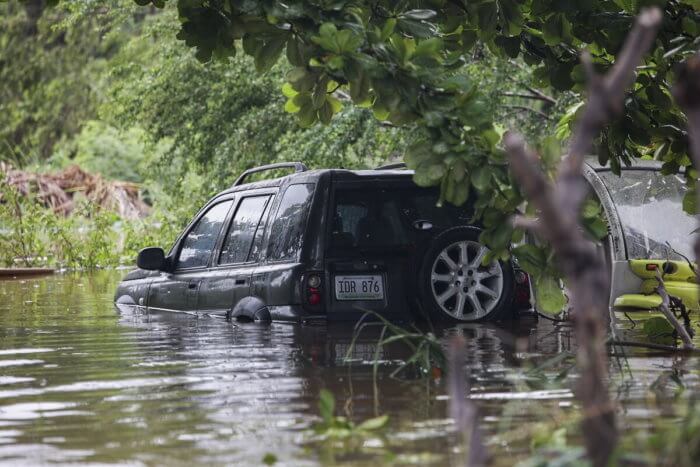
Fiona had already killed at least four people as of Tuesday, including one in the French territory of Guadeloupe, which Fiona slammed late last week; two in Puerto Rico; and one in the Dominican Republic, according to officials.
Gina DeJesus, who is currently volunteering in Vega Alta, Puerto Rico, has seen three days of homes being broken down, generators not working, and said that lack of investment in Puerto Rico’s infrastructure continues to leave it exposed and imperiled during hurricane season.
“We’re on day 3 with no power, no water. A lot of the inlands and island are devastated,” DeJesus told the Bronx Times. “People are going through what they went through with Maria. Yes, we are resilient and we fight for our people — but there’s people with money and power who haven’t done anything to fix what happened during Maria.”
Rosario, 60, told the Bronx Times he still hasn’t heard from his 83-year-old mother or his cousins, who live in Salinas Beach, which has been submerged in thick, brown water from Fiona’s landfall. Rosario was in Puerto Rico in 2017 when Hurricane Maria “destroyed” his home, thus moving to the Bronx to live with his son in 2018.
“(This) reminds me of Maria. What Maria took from us, and the hurt and pain you could see in the Barrio,” Rosario said. “I want to know that my mom is okay, that my cousins and their neighbors are okay. Not having answers right now, it hurts.”
Fiona wreaked havoc on Puerto Rico’s power grid, leaving millions without electricity. Puerto Rico’s Gov. Pedro Pierluisi declined to say how long it would take to fully restore electricity, but said for most customers it would be “a question of days.”
Since the start of the storm, National Guard troops have rescued more than 900 people, Puerto Rico’s adjutant general Maj. José Reyes said in a news conference.
On Tuesday, South Bronx Councilmember Rafael Salamanca and local organizations such as The Hispanic Federation are doing what they’ve done in past hurricanes — such as the season of hurricanes that brought devastating Maria, Irma and Jose to the islands in 2017 — and are in “response” mode urging the need for solar panels and other grids to be sent to the Caribbean.
“We are reliving what happened with Maria. When you look at the amount of water, the amount of damage, it brings back devastating and painful memories,” said Salamanca. “For the South Bronx, this is nothing new. This brings back traumatic memories (of Maria) but we’re also looking to do what we can to help, particularly, panels, generators and power sources.”
Salamanca said a major issue is the privatization of the territory’s power grid — once operated by the since bankrupted government-run Puerto Rico Electric Power Authority — now owned by LUMA Energy, who took ownership of the grid in June 2021.
“The private company that owns the grid, LUMA, they’ve shown that they cannot handle (the task) of providing power to the island during times like these when they most need it,” he said. “I really hope after Puerto Rico recoups, there’s a long hard look on who owns the power grid and why so many don’t have reliable access to power.”
DeJesus said that LUMA’s ownership has led to very little change in the communities, and told the Times that communities were losing power “months and weeks” before Fiona hit the island.
“It’s been a crisis here for five years, and people that think the United States government is corrupt, need to look into how Puerto Rico’s government chooses money over protecting its people,” she said.
Just $40 million of the $13.2 billion in federal funds meant to rebuild Puerto Rico’s grid since Maria have been spent, a FEMA official said.
Ortiz, 45, said seeing images and videos of flooded Puerto Rican streets and homes has brought her back to a traumatic place, witnessing similar events transpire in 2017. Ortiz told the Bronx Times she lost her 27-year-old brother, David, during Hurricane Maria but didn’t receive notice of his death for months.
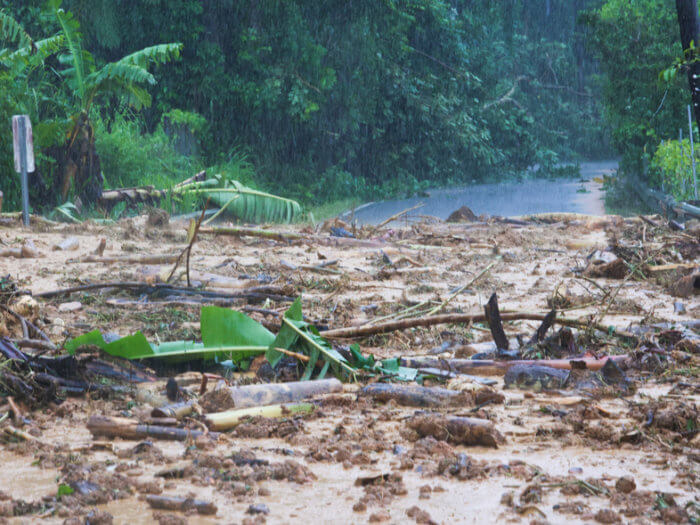
“I see David when I see the horrible images (of Fiona), I can’t help but see his face,” said Ortiz, who grew up in Santo Domingo and moved to Mott Haven in 2014. “I hope more than anything, for people here, they get some sign that their loved one is safe.”
-The Associated Press contributed to this report
Reach Robbie Sequeira at rsequeira@schnepsmedia.com or (718) 260-4599. For more coverage, follow us on Twitter, Facebook and Instagram @bronxtimes

